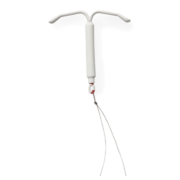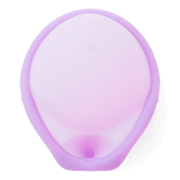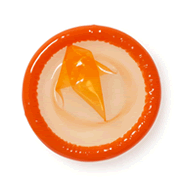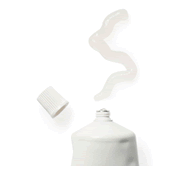Why I use a diaphragm for birth control
The diaphragm is hormone-free and gives me total control

Here’s the thing about using a diaphragm for birth control in 2019: people often think you’re a little out there. That might be because the last time we saw a diaphragm in popular culture was when Carrie Bradshaw of Sex and the City fame got hers stuck inside her vagina and had to turn to Samantha for help to get it out. But even then, in the late 90s and early aughts, diaphragms just weren’t very popular anymore. And yet, I use a diaphragm. In fact, for the past four years it’s been my primary form of birth control—and I’ve never been pregnant. So what is a woman in her early 30s doing using a diaphragm, when there are more popular (and more effective) forms of birth control out there?
But before we get into my personal preference, let’s talk a little bit about what diaphragms are. A diaphragm is a shallow silicone cup that you slather with spermicide and then push up into your vagina, up to six hours before sex. It sits right behind the pubic bone, covering the cervix and blocking sperm. If any little guys do get through, the spermicide is there is to kill them before they make it into the uterus. After sex, you leave it in for six to eight hours—depending on the brand of spermicide—before taking it out.
My number one reason for using a diaphragm is that it’s a non-hormonal birth control method that I have total control over. I decide when to put it in, when to take it out, and it doesn’t have any effect on my body when I’m not using it.
But I haven’t always used a diaphragm. I actually took the pill for about 10 years, starting when I was 15, and I had a generally good experience with it. I didn’t have the mood shifts, weight gain, or acne that some people get with hormonal contraceptives. What I did get, however, were some sexual side effects. For example, as a teenager, I had to use lube during penetrative sex—and the teenage years are a time when many bodies are lubing up very well on their own.
Over time, those side effects started to bother me more and more. I’d been taking hormones for as long as I’d been having sexual intercourse and I wanted to know: what would it be like without them?
So I decided to try something different, and I stopped taking the pill. While I was single, I relied primarily on condoms or the pull-out method (which is not the most effective form of birth control or the best option for casual sex due to the risk of STI transmission when not using condoms/internal condoms) for birth control. But once I found a partner that I wanted to be monogamous with, I decided to switch to using a diaphragm.
While my partner and I primarily used condoms during the first couple of years we were together, the diaphragm has proven to be a really great method of birth control for us, especially as our relationship has matured. These days, I pretty much know when we’re going to have sex—which means I can put the diaphragm in beforehand. As a result, there’s no interruption to the flow of sex like there is with a condom. Also, neither of us can feel it!
But I can’t talk about diaphragms—or any form of birth control, for that matter—without mentioning some potential negatives. The biggest problem with diaphragms is that they’re not the most effective form of birth control. Diaphragms are about 94% effective against pregnancy with perfect use and 88% effective with real life use. (In comparison, condoms are 98% effective when used perfectly and 82% effective with typical use and IUDs are 99% effective for both.) So if effectiveness at preventing pregnancy is the most important factor for you in choosing a birth control method, I wouldn’t recommend the diaphragm as a primary form of birth control for you. For me, at 32 and with a long-term partner, an accidental pregnancy wouldn’t be ideal, but it would be manageable. For me at 17 though—or even 24, with multiple partners—it would have been devastating.
At this stage in my life, however, the diaphragm really is the ideal option for me. Unlike hormonal methods or the IUD, it doesn’t affect my body when I’m not having sex. I control when and how I use it. And it’s pretty unobtrusive. Those positives all outweigh the negative of a slightly higher risk of pregnancy for me.
If you’re interested in getting a diaphragm, you’re going to have to make an appointment with a health care provider. For a traditional diaphragm, you’ll need to get fitted. It’s not exactly a pleasant process—basically, it involves the provider putting different sizes of diaphragms in your body while you’re up in the stirrups—but you really only have to do it once. There’s also a newer one-size-fits-most diaphragm called Caya, which you can get a prescription for without a fitting. You’ll still have to visit your health care provider to get the prescription, but you won’t have to get up in the stirrups.
Either way, if you’re interested in checking out this non-hormonal form of birth control, make an appointment. You might be surprised by how much you like it.
How do you feel about this article?

Heat up your weekends with our best sex tips and so much more.




